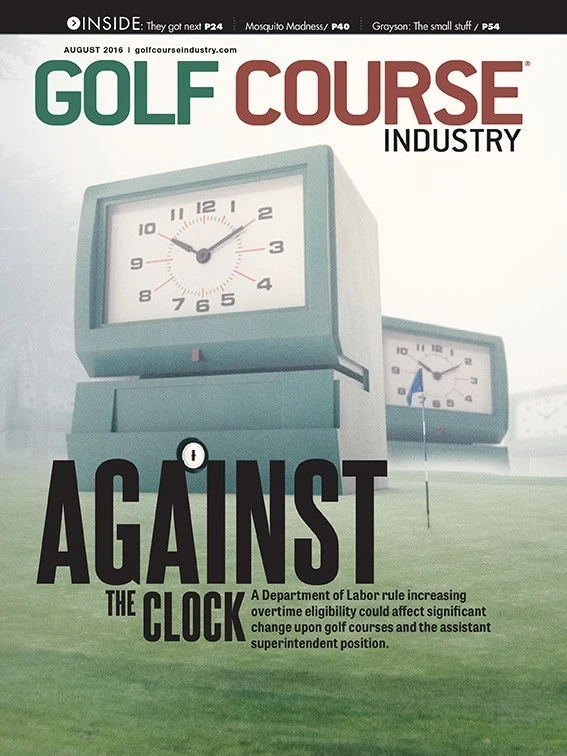Author Alvin Toffler died last month, and the death of one of the world’s first futurists got me thinking about, well, the future. It was nearly 50 years ago that Toffler warned of a sickness brought on by the accelerating pace of technological change. He called the sickness “future shock,” also the title of his groundbreaking book.
The way Toffler saw it, future shock was a real psychological malady, the “dizzying disorientation brought on by the premature arrival of the future.” And “unless intelligent steps are taken to combat it,” he warned, “millions of human beings will find themselves increasingly disoriented, progressively incompetent to deal rationally with their environments.”
Is golf suffering from future shock? Are the changes taking place outside our world too much to absorb into our tradition-laden business models and practices?
It’s naïve to think that change on a global scale does not affect golf in ways that are and will continue to fundamentally alter the game and the business. The most important of those changes should cause us to acknowledge the truth in the following:
- Golf doesn’t operate in a vacuum. People who play golf and those who consider taking up the game are influenced by macro-economic and social forces. Consumer confidence, housing economics, jobs, household income and education all play a role in who decides to play our game, how much they play and where they play. These forces are ones that make innovative offerings such as TopGolf appealing to people at every socio and economic level.
- Golf is graying. Many people playing golf are Baby Boomers whose frequency and total of rounds played diminishes with age. Will the initiatives aimed at new golfers, women, juniors and millennials backfill the demand once boomers age out of the game? If not, what will?
- Environmentalism is expanding. In most provinces of Canada and many U.S. states, the use of pesticides on golf courses and sports fields has become more restrictive. This trend will continue to put pressure on course owners and superintendents to be conscientious stewards of their small piece of the planet. We will continue to see dramatically new methods in the care, upkeep and generally accepted course conditioning standards. Many wonder how golfers will respond and will a better understanding of environmental challenges lower their expectations for course conditioning.
The question left in the wake of these changes is how will you deal with them? Managing change and becoming a change agent requires a focused understanding of not only macro forces, but also your markets and customers. Here are four guidelines to keep in mind:
Have a clear-cut plan and know the results you want. Many of the most successful clubs credit strategic thinking and planning. If your facility is considering a strategic plan, first steps include validating and aligning your mission, vision and objectives; researching and understanding your market; and reconfirming your brand promise to deliver consistent experiences and value. With these steps as a foundation, you can begin to identify the actions that will lead to intended results.
Set SMART goals. Goal setting is easy, unless you want to get it right. Effective goal setting requires focus on desired outcomes. To set the right goals for your club or course, make them SMART: Specific, Measurable, Action-oriented, Realistic and Time-specific. See that the goals align with the end results you want.
Identify and delegate. Organize a trustworthy group of process-driven thinkers. Keep the group small enough to focus on priorities but large enough to get the work done. Most team members must possess or be taught how to learn on the fly, as the best competitive advantage comes from innovative solutions and new ideas. Delegate tasks based on specialized knowledge and capabilities. Empower your team to identify and consider every possibility and go beyond the popular or pedestrian solutions.
HOLD EVERYONE ACCOUNTABLE – INCLUDING YOURSELF. Accountability for completed results is essential to effective planning and achievement. Top performers want to post a score. Owners, boards of directors and fellow members hold managers accountable. You should do the same for your staff.
Get curated news on YOUR industry.
Enter your email to receive our newsletters.
Explore the August 2016 Issue
Check out more from this issue and find your next story to read.
Latest from Golf Course Industry
- The Cabot Collection announces move into course management
- Carolinas GCSA raises nearly $300,000 for research
- Advanced Turf Solutions’ Scott Lund expands role
- South Carolina’s Tidewater Golf Club completes renovation project
- SePRO to host webinar on plant growth regulators
- Turfco introduces riding applicator
- From the publisher’s pen: The golf guilt trip
- Bob Farren lands Carolinas GCSA highest honor






